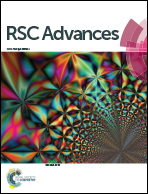Nanovesicular system containing tretinoin for dermal targeting delivery and rosacea treatment: a comparison of hexosomes, glycerosomes and ethosomes
Abstract
The purpose of this study was to develop tretinoin-loaded phospholipid vesicles, namely conventional liposomes, hexosomes, glycerosomes and ethosomes, and to investigate their efficacy on croton oil induced rosacea. Vesicles were prepared with soy phospholipid, sodium deoxycholate and tretinoin; 1,2-hexanediol, glycerol and ethanol were added to obtain hexosomes, glycerosomes and ethosomes, respectively. The prepared formulations were characterized in terms of size distribution, morphology, zeta potential and entrapment efficiency. All vesicles were spherical in shape with a mean diameter ranging between 60 and 132 nm and a fairly narrow distribution (0.23–0.29), negative zeta potential values (from −19 to −29 mV) and entrapment efficiency between 32 and 63%. Furthermore, vesicles were evaluated for an in vitro model of dermal delivery, and their mode of action was studied by performing confocal laser scanning microscopy (CLSM) and attenuated total reflectance Fourier transform infrared spectroscopy (ATR-FTIR) analyses. In addition, in vivo skin penetration was also investigated. The results of in vitro and in vivo studies showed that vesicular formulations, especially hexosomes, promoted the drug deposition into the skin stratums and reduced the permeation into the blood. Finally, administration of vesicular tretinoin on croton oil-induced skin resulted in marked attenuation of oedema and inflammatory cells, especially using hexosomes. The proposed approach based on tretinoin vesicular formulations may be of value in the treatment of rosacea.


 Please wait while we load your content...
Please wait while we load your content...